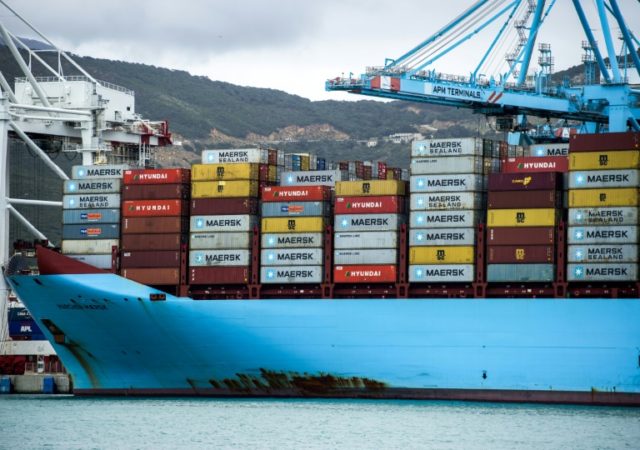Tangiers (Morocco) (AFP) – Home only to grazing sheep just a decade or so ago, a stretch of Moroccan coastline near Tangiers is now abuzz as its new port presses full speed ahead towards expansion.
Inaugurated in 2007, the Tanger-Med port complex, not far from the Strait of Gibraltar, handled 51.3 million tonnes of cargo — on a par with the Port of London.
Its industrial park, connected to a free-trade zone, is creating jobs at a rate that “exceeds expectations”, according to port chief Jaafar Mrhardy.
With 750 companies and thousands of employees, it generated 5.5 billion euros ($6.8 billion) of revenue in 2017.
The port’s strategic location, growing industrial zone and cheaper local labour have attracted shippers, truckers and businessmen alike, but its ambitions do not stop there.
Tanger-Med, which expects its Tanger Med II extension to triple container capacity by 2019, is aiming to become the Mediterranean’s top port.
“We are positioning ourselves as a ‘best cost’ country,” said Mrhardy, “with proximity to European markets and very competitive costs.”
– 2.8 million travellers –
Bulldozers are working on embankments, and three gigantic gantry cranes have already been delivered.
Even in bad weather, the Spanish port of Algeciras is clearly visible on the other side of the strait.
On one of the Tanger-Med I docks, a massive wind turbine produced by a local branch of Spanish renewable energy giant Siemens Gamesa was awaiting delivery.
Nearby, security guards with a sniffer dog scanned cars as they boarded a ferry bound for Italy.
The port’s passenger terminal handled 2.8 million passengers last year.
During peak season, it receives up to 33,000 passengers and 9,000 vehicles per day, said Hassan Abkari, director of the port’s passenger division.
He said the new port has helped to reduce waiting times and to unclog Tangiers’ city centre.
Truckers now use a motorway junction that bypasses Tangiers city, 50 kilometres (30 miles) away. About 290,000 semi-trailers passed through Tanger-Med just last year.
Day and night, teams of trucks loop between the docks of the port complex, the storage warehouses and the companies in the industrial zone.
The workshops of “Still Nua Fashion”, in an alley of the free-trade industrial zone, receive containers of fabric from China and Turkey.
Designs made in Ireland are cut and sewn, ready for shipment to the United States and Britain.
“We are in the ‘fast-fashion’ (business),” said Naoual el-Mlih, Still Nua’s energetic director. “With very short delivery times, the proximity of the port is crucial.”
– ‘Time is money’ –
For Mohammed Ali Enneifer, a Tunisian who leads a branch of the French cable production company Acome, the port’s strategic placement is key.
“Time is money. It used to take three weeks to reach Hamburg, now it’s 10 to 12 days,” he said of the link with the German port city.
“The connections are direct. We can receive or remove a container in less than 24 hours.”
French car manufacturer Renault, which opened a plant in Tanger-Med in 2012, exported more than 300,000 cars last year to the 74 countries served by the port.
Its site employs 8,600 people and “100 percent of the staff is Moroccan”, boasted factory director Renaud Le Gal.
Next year, the port expects to also export cars built in a new Peugeot factory in Kenitra, 200 kilometres to the south, said Rachid Houari, another Tanger-Med director.
Beyond the logistics and customs facilities offered by the port’s free-trade zone, the cost of Moroccan labour is another major draw.
“Our parent company in Ireland employs 75 people, at a total cost equal to that of our branch, which has 400 employees,” said Mlih of Nua Fashion.
The company plans to move its design services from Dublin to Tangiers, joining a growing crowd of outfits making the same jump.

COMMENTS
Please let us know if you're having issues with commenting.